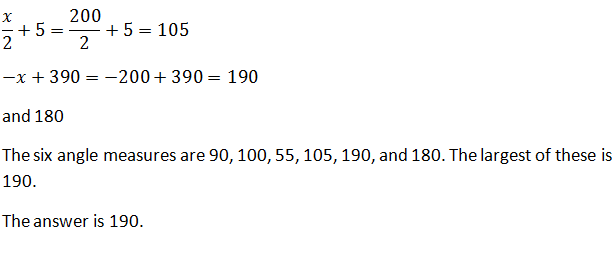All High School Math Resources
Example Questions
Example Question #2 : How To Find The Perimeter Of A Hexagon
What is the perimeter of a regular hexagon with a side length of 
To find the perimeter of a regular hexagon you must first know the number of sides in a hexagon which is 
When you know the number of sides of a regular polygon to find the perimeter you must multiply the side length by the number of sides.
In this case it is
The answer for the perimeter is 
Example Question #1 : Hexagons
This figure is a regular hexagon with one side measuring 6 cm.
What is the perimeter of the regular hexagon in centimeters?
The perimeter of a regular hexagon is just the sum of all 6 sides. Because it's a regular hexagon, the perimemter is just six times one side (6 cm) or 36 cm.
Example Question #1 : How To Find The Length Of The Diagonal Of A Hexagon
What is the length of a diagonal of a regular hexagon with side length 
Regular hexagons are comprised of six equilateral triangles; in our question, these triangles each have side length 4 (see diagram).

The length of a diagonal is equal to two times the length of the side. In this instance, the answer is 8.
Example Question #13 : Plane Geometry
How many diagonals are there in a regular hexagon?
A diagonal is a line segment joining two non-adjacent vertices of a polygon. A regular hexagon has six sides and six vertices. One vertex has three diagonals, so a hexagon would have three diagonals times six vertices, or 18 diagonals. Divide this number by 2 to account for duplicate diagonals between two vertices. The formula for the number of vertices in a polygon is:
where 
Example Question #2 : How To Find The Length Of The Diagonal Of A Hexagon
How many diagonals are there in a regular hexagon?
18
6
3
10
9
9
A diagonal connects two non-consecutive vertices of a polygon. A hexagon has six sides. There are 3 diagonals from a single vertex, and there are 6 vertices on a hexagon, which suggests there would be 18 diagonals in a hexagon. However, we must divide by two as half of the diagonals are common to the same vertices. Thus there are 9 unique diagonals in a hexagon. The formula for the number of diagonals of a polygon is:
where n = the number of sides in the polygon.
Thus a pentagon thas 5 diagonals. An octagon has 20 diagonals.
Example Question #1 : Understanding Addition And Subtraction
Simplify
Find the least common denominator (LCD) and convert each fraction to the LCD and then add. Simplify as necessary.
The result is an improper fraction because the numerator is larger than the denominator and can be simplified and converted to a mix numeral.
Example Question #2 : Hexagons
200
210
180
170
190
Example Question #1 : Hexagons
If a triangle has 180 degrees, what is the sum of the interior angles of a regular octagon?
The sum of the interior angles of a polygon is given by 

Example Question #11 : Hexagons
What is the measure of an interior angle of a regular hexagon?
The measure of an internal angle of an regular polygon can be determined using the following equation, where 
Example Question #1 : Algebra Ii
Simplify 
Chenge the mixed numbers into improper fractions by multiplying the whole number by the denominator and adding the numerator to get

Certified Tutor
All High School Math Resources





















































